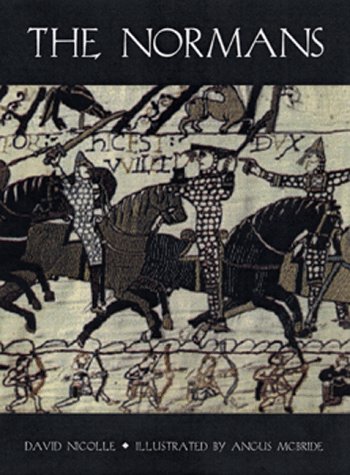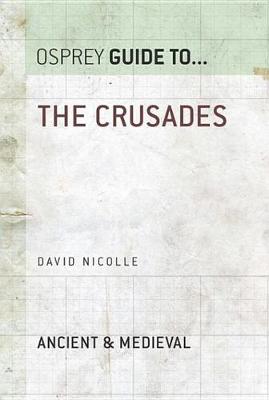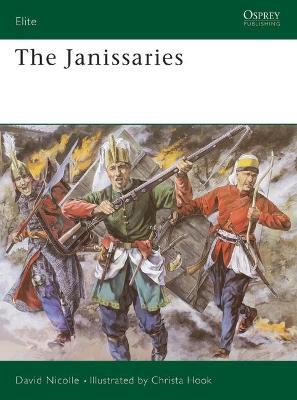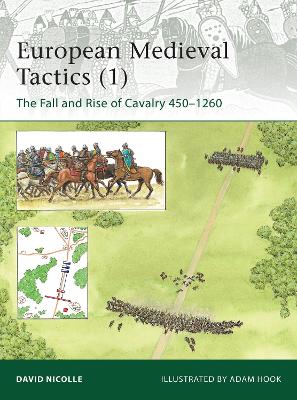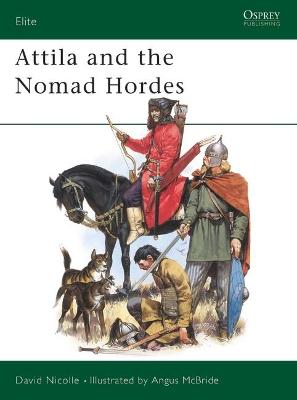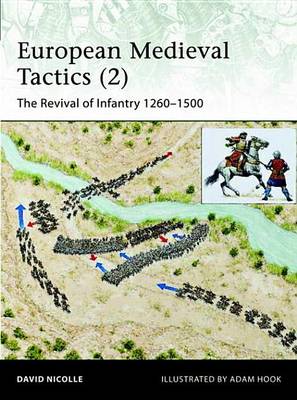Elite
4 primary works • 6 total works
Book 9
Osprey's study of the Normans during the Middle Ages. Despite the small geographic extent of Normandy its people played a crucial role in the history of the medieval world. Ferocity, boundless energy, cunning and a capacity for leadership were their heritage, to which modern scholars would add supreme adaptability and a simple piety. Their amazing military successes resulted from careful planning, speed of movement, decisiveness, daring and sheer ruthlessness. Added to this was a strong business sense and an appreciation of the value of money. Veteran Osprey author David Nicolle describes the history, arms and armour of the remarkable Normans in this fascinating volume.
Book 19
Born of a mixture of religious fervour, military ardour and political will, the Crusades ( 1095 - 1291) remain a fascinating and misunderstood aspect of medieval history. Born amid immense suffering and bloodshed the Kingdom of Jerusalem remained a battlefield for almost 200 years. The Crusades raised to campaign for it gave rise to the Military Orders of the Templars and Hopitallers as well as numerous smaller orders, and were a backdrop to the careers of some of history's most famous leaders including Richard 'The Lionheart' and Saladin. David Nicolle recounts the background and events of these fundamental campaigns that scarred the Late Medieval period.
Book 58
The Janissaries comprised an elite corps in the service of the Ottoman Empire. It was composed of war captives and Christian youths pressed into service; all of whom were converted to Islam and trained under the strictest discipline. In many ways, Jannisaries reflected Ottoman society, which was itself dominated by a military elite and where there was much greater social mobility than in Europe. On top of this, the Turks looked upon Europe much as the early Americans viewed the Western Frontier - as a land of adventure, mission and opportunity. David Nicolle examines the history, organisation, weapons and uniforms of these elite Turkish troops.
Book 185
After the fall of the Western Roman Empire there was a decline in 'professional' cavalry forces, and infantry dominated in the Germanic successor 'barbarian' kingdoms. In the Carolingian and Norman periods from the 9th to the 11th centuries, the cavalry arm gradually expanded from the small remaining aristocratic elite. Even so, the supposedly complete dominance of the 'knight' in the 12th and 13th centuries is grossly exaggerated, as integrated cavalry and infantry tactics were nearly always the key to success. This is a two-part treatment of medieval tactics. Throughout the period there was a steady evolution of training in both individual and unit skills, of armour and weapons, and thus of tactics on the battlefield. This book covers Hastings in 1066 to Legnano in 1176. It also details the two key set piece battles of Bouvines in 1214 and Pelagonia in 1259, the former an example of abject failure of cavalry tactics and the latter a stunning success.
No 30
Of all the conquerors who swept out of Central Asia, two names stand out in European memory - Attila the Hun and Genghis Khan the Mongol. Both are remembered for massacres and devastation; yet whereas Genghis is also famous for the laws he imposed on half of Asia and for the trade which flourished under Mongol rule, Attila's notoriety seems unrelieved by positive achievements. But what was Attila's short-lived empire really like? What happened to the Huns afterwards, and what role did the nomads of Central Asia play in the centuries between Attila and Genghis Khan?
With the development in the 13th century of co-operative tactics using crossbowmen and heavy spearmen, circumstance began to arise in which the charge by Muslim horse-archers, and then by European armoured knights, could be defied. Infantry were far cheaper and easier to train than knights, and potentially there were far more of them. Tactics emerged by which more numerous and more varied infantry played an increasing part in battles. This book traces these and other examples of this 'jerky' and uneven process through its regional differences, which were invariably entwined with parallel cavalry developments - the balanced army of 'mixed arms' was always the key to success. By the time serious hand-held firearms appeared on battlefields in large numbers in about 1500, the face of medieval warfare had been transformed.
